The pressure regulator changes the pressure in the hydraulic drive of the rear wheel brakes depending on the load on the rear axle of the car.
It is included in both circuits of the brake system, through it the brake fluid flows to both rear brake mechanisms.

The regulator is bolted to the car body.
Its rod is connected to the rear suspension beam through a spring-loaded load rod, a lever and an earring.
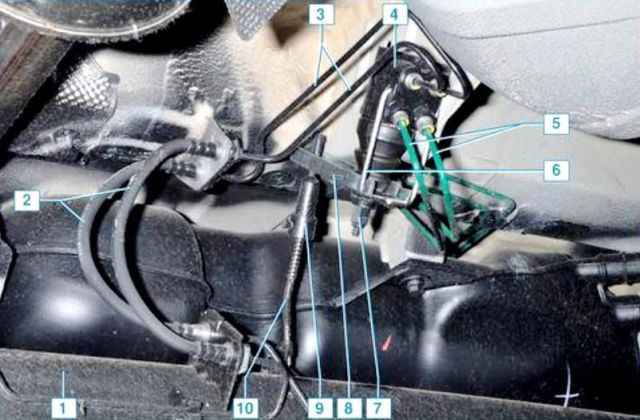
Depending on the distance between the beam and the body, which depends on the vehicle load, the regulator rod moves, which, in turn, with the help of a valve system, changes the cross-sectional area of the passage channels of the circuits inside the regulator, thereby limiting the pressure in the rear brake circuits.
The degree of restriction of the regulator, and, consequently, the pressure in the circuits is regulated by changing the length of the regulator stem with a nut.
To remove the regulator, you will need a special wrench for 11 for brake pipes, a wrench for 13, a screwdriver.
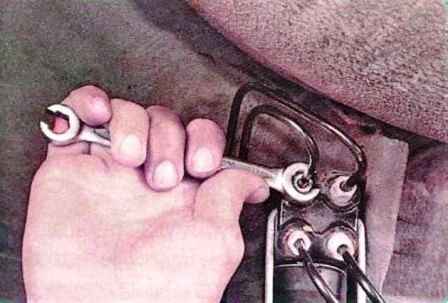
Unscrew the nuts securing the four tubes to the regulator and move the tubes to the side
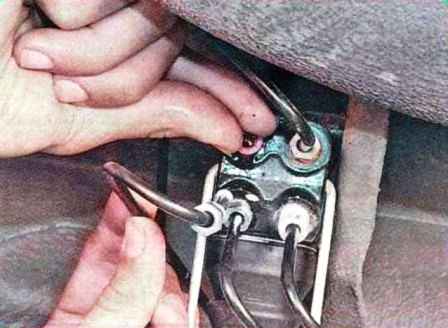
We plug the holes in the regulator body and tube using available methods to prevent leakage of brake fluid.

Pry off with a screwdriver, unfasten the lock of the load rod of the regulator
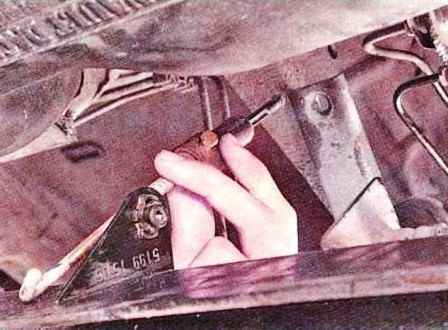
We remove the load rod, bringing its ends out of the holes in the bracket on the rear suspension beam and in the pressure regulator lever in the rear brake hydraulic drive

We unscrew the two bolts securing the regulator to the body
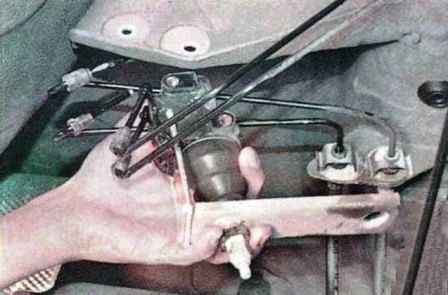
Remove the regulator
Install the regulator in reverse order.
Fill in the brake fluid and bleed the brake system (article - Replacing the brake fluid and bleeding the Renault Sandero brakes)
We check the efficiency of work by sharp braking on a site with a dry uniform surface.
After braking the car, get out of the car and inspect the brake marks left by the car's wheels.
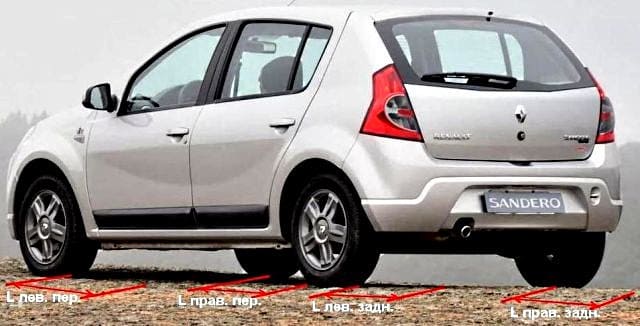
The following ratios must be respected:
- - L lion. per. = L right. trans.
- - L lion. rear = L right. rear
- - L lane > L rear
The rear wheels must be blocked with a significant delay relative to the front.
If the rear wheels lock before or at the same time as the front wheels, or if the brake marks from the rear wheels are of different lengths, the pressure regulator needs to be adjusted
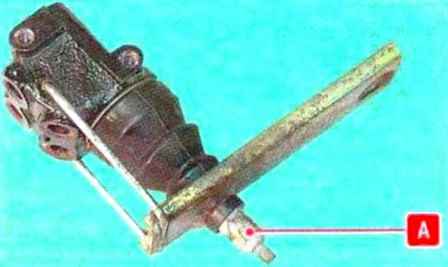
The force in the hydraulic drive of the rear brakes is changed with the adjusting nut "A" on the regulator lever.
Adjusting the drive of the rear brake pressure regulator
When adjusting, the car must be in running order and stand on wheels.
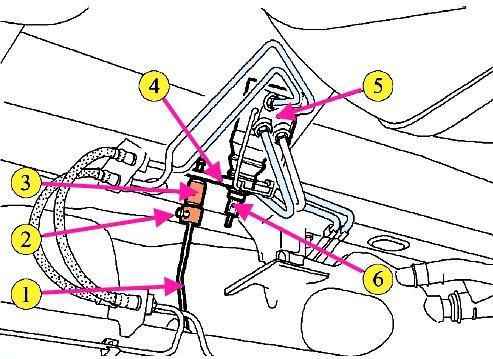
Adjust the rear brake pressure regulator by:
- - unscrew the coupling bolt 2, figure 2, of the adjusting sleeve;
- - set the adjusting clutch 3 of the drive lever so that it touches the lever 4 of the rear brake pressure regulator;
- - tighten the coupling bolt. Bolt tightening torque 12 Nm (1.2 kgf.m).
When adjusting, it is not allowed to influence the nut 6 of the regulator rod





